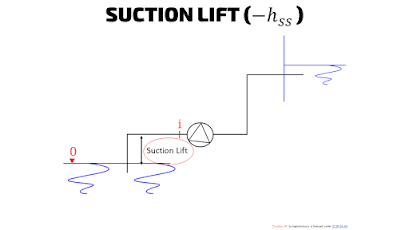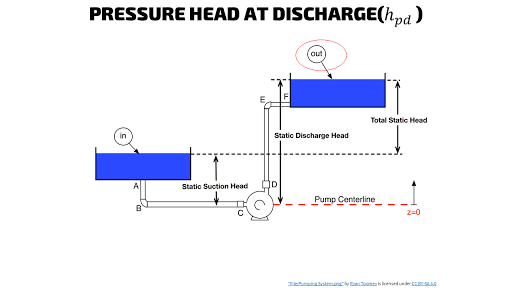Pump Total Differential Head
Let
us consider a system curve of a pump system.
or runs the flow out of the pump hydraulics.
Hence
the estimation of TDH plays a vital role prior to the pump sizing.
The total differential head has two components, Discharge Head and Suction Head.
It is basically a difference between the total discharge head and total suction head
Now
let's look at the suction head
Suction
head has three components in their calculation, static suction head (hss),
pressure head ( hps) & friction loss
head at suction (hfs)
Where
Static
suction head is the elevation height from the suction level to the suction
flange.
If
the suction is from the below the centreline of the pump, then it is called
suction lift and it is expressed in a negative value.
Then
the surface pressure at the inlet side. It is zero for atm tank/ sump
Similarly
, Total Discharge head has components such as
static discharge head, pressure head required at discharge and friction
loss from the discharge flange to the destination.
In
the next segment, we are going to look at NPSH and its significance on pump
design.
Image Credits:
- All photos are licensed under CC by NC 2.0













Comments
Post a Comment